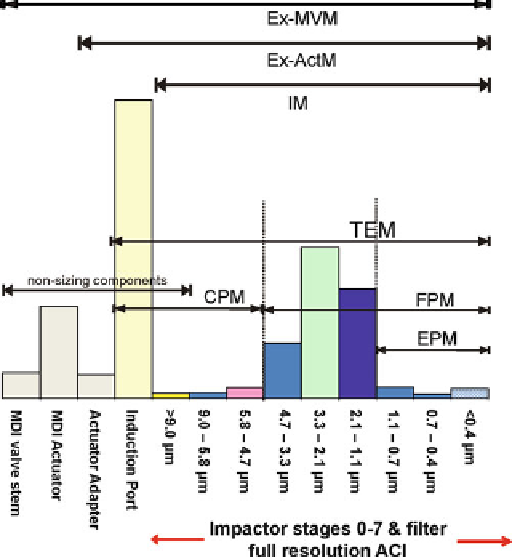Biomedical Engineering Reference
In-Depth Information
Fig. 12.7
Metrics pertinent to understanding particle deposition in a pHRT CI based on the ACI
design operated at 28.3 L/min
In these instances, the abbreviated measurement concept can still apply to OIP
characterization, but through measures of coarse, fi ne, and possibly extra-fi ne par-
ticle fractions (Fig.
12.7
).
The metrics associated with such a so-called AIM-pHRT-based apparatus are
based on the stage
d
50
values for the ACI operated at a fl ow rate of 28.3 L/min. The
terms “
Ex-MVM
,” “
Ex-ActM
,” and “
IM
” refer to total mass of API ex-metering
valve (in the case of an MDI), ex-inhaler mouthpiece, and mass collected in the
impactor, respectively. Although some studies have demonstrated moderately good
IVIVRs using anatomically correct model inlets [
9
,
27
], more experimental work
remains to be done to explore the full potential for such approaches as a prediction
tool for lung dose from OIPs (Sect.
12.2
). In particular, there is currently no stan-
dardized adult anatomical throat/upper airway. Those made from cadaver casts have
been reported as being prone to bias caused by partial tissue collapse, but inlets
reconstructed from three-dimensional imaging from living subjects using magnetic
resonance imaging (MRI) show promise [
28
,
29
].
The dimensions of the upper airways (mouth, pharynx, and larynx) vary between
individuals [
9
], with the position of the tongue determining the velocity of inhaled
air through the mouth. Such intrinsic variability will inevitably result in fl uctuations

Search WWH ::

Custom Search